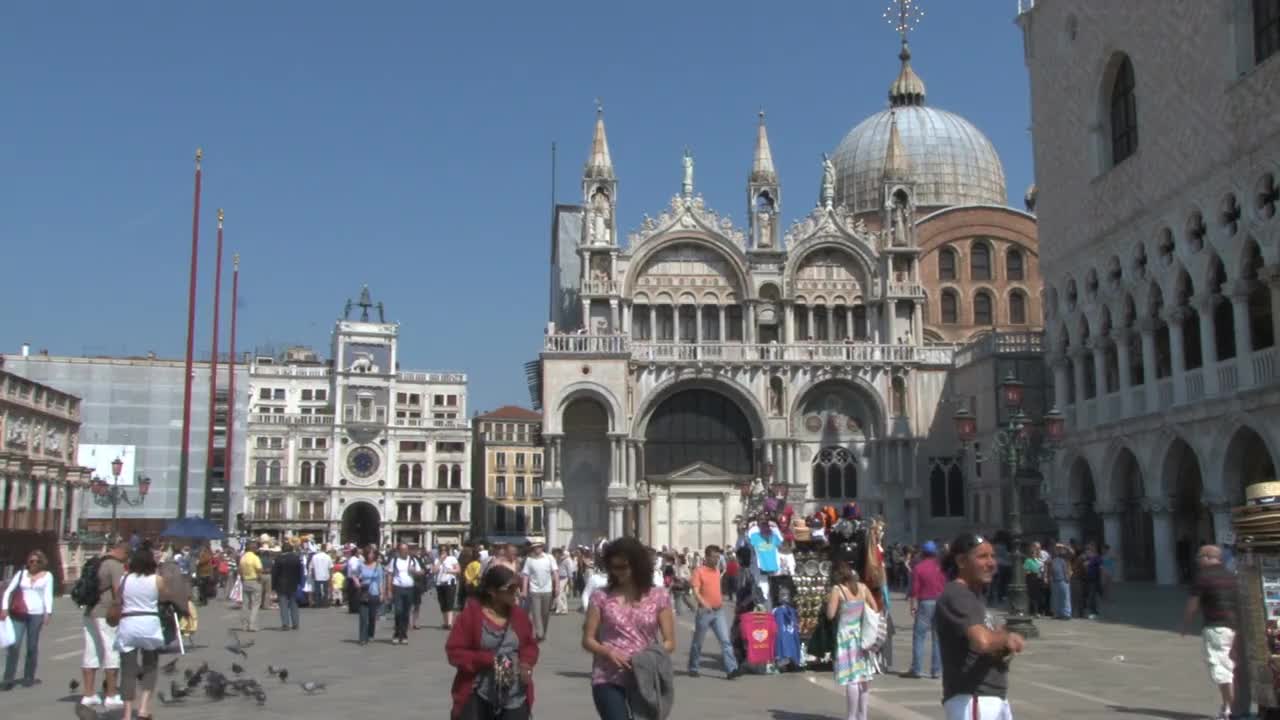Premium Only Content

Venice Is Sinking
The City of Venice is Sinking
The splendor of Venice has captured the imagination of countless travelers, and rightly so. What makes it truly unique is that it’s the only city in the world where the land, sea, and sky seem to come together. The city of Venice has maintained its majesty for over 1200 years, and it continues to flaunt its rich heritage, art, and of course, its unique Venetian architecture. But, when you think about it, it seems almost a miracle that the city is still standing today.
After all, the city was conquered by general Napoleon Bonaparte in 1797, was turned into a naval base, survived two world wars, and has been battling the rising sea tides since the 5 th century, and this time, the sea is winning.
Today, the floating city of Venice is quite a sight to behold - from its vast network of charming canals to its rich architecture seeping in history. Unfortunately, that’s not the only thing seeping through the Venetian city. Venice is sinking at an alarming rate of 1 millimeter every year. Over the past 1,000 years, the city has sunk 2.75 inches. But, during the 20 th century, Venice has sunk around 9.44 inches.
Acqua Alta
Venice floods many times during the year, with the worst flooding occurring between the months of October and March. The phenomenon is known as Acqua Alta and occurs when the high tides of the
Adriatic Sea mix with the strong sirocco winds and a storm. When this happens, Venetians have to walk on temporary wooden planks and use gondolas to travel around the flooded areas of the city. Flawed by Design
Venice was built around 401 A.D., on 118 islands in the middle of a lagoon that’s located at the edge of the Adriatic Sea. The first settlers were faced with a challenge of needing more space and a better foundation to build their homes on. To do that, they dug up hundreds of canals and used wood pilings to shore up the banks and build the foundation for buildings.
As a result, thousands of wood pilings were hammered into the soft mud to create the foundation that the streets and buildings stand on today. The plan was ingenious and one-of-a-kind at the time. Since the wood was underwater, it didn’t rot. It’s hard to imagine that there are still many Venetian buildings that are standing on the same wood piles even after a thousand years.
But, the city seemed to be doomed from the time it was built. One of the main reasons that Venice is sinking is because of the way it was built. As the city grew larger, the buildings pushed the wood piles deeper into the mud, squeezing out water and the compacting soil, and slowly sinking the city.
Global Warming
Global warming is a major factor in rising sea levels. As the increasing levels of greenhouse gases raise the Earth’s temperature, it has resulted in the melting of polar caps, which is contributing to an accelerated increase in global sea levels. This is only having an impact on the city of Venice, but also many other coastal cities and islands across the globe. But, global warming is not the only problem that’s causing Venice to sink. The city sits atop sediments that were deposited at the ancient mouth of the Po River during the construction of the city.
According to experts, these sediments and still compacting and settling. Furthermore, construction work, such as the railroad bridge and offshore piers also had a negative impact on the seafloor, which has made the city more vulnerable to flooding.
During the 20th century, industrial projects in Venice led to the pumping of large amounts of groundwater from the aquifer beneath the lagoon. This practice lasted for more than 50 years, before finally being stopped in the 70s. By then, the damage was done. Venice has sunk by nine inches into the sea since.
Shifting Plate Tectonics
Not only is Venice sinking due to rising ocean levels and various other factors, but the city is also tilting to once side (towards the east to be specific). Venice sits atop the Adriatic Plate, and according to experts, the city is becoming a victim of the subduction of the plate under the Apennines Mountains. The term subduction refers to when a plate located on Earth’s outer shell moves downwards and sideways underneath another plate.
The process of subduction is not only causing the city to sink gradually into the sea, but also tilt sideways toward the east. This has resulted in the eastern parts of the city being lower than the western parts.
Much like the first Venetian settlers, modern-day engineers and urban planners are working together to keep the rising seas at bay. They plan to do this using modern, sophisticated techniques, such as the barrier known as the Modula Sperimentale Elettromeccanico (MOSE), which was deliberately named to create the acronym to invoke the great parter of the seas, Moses. MOSE is a combination of 78 water gates that have been designed to block the rise of the water level at key junctures throughout the city.
Conclusion
Although much of the ancient city (70%) has long since submerged, Venice has still managed to bewitch a multitude of poets, artists, authors, and travelers through the ages. Despite the fact that Venice is sinking at an alarming rate and could one day be swallowed up by the sea, the city remains to be one of the must-see tourist destinations in the world, with thousands of travelers making the trip to the floating city to experience its splendor each year.
Venice is also famous for its Venetian architecture and ornate glass work which is known as “Venetian glass.” The city also hosts the famous carnival of Venice which is held each year and pulls in large crowds of tourists from across the globe.
-
 1:17:36
1:17:36
FATHERFISH
3 years agoVENICE AQUARIUM SOCIETY
23 -
 1:04
1:04
Trumpster883
3 years ago $0.01 earnedGondola ride in Venice
52 -
 13:54
13:54
Baconz
3 years agoSunmary sinking
13 -
 10:59
10:59
Cmorton234
3 years agoCreating Sinking Funds
11 -
 0:35
0:35
WMAR
3 years agoFire Boat sinking
12 -
 1:09:26
1:09:26
FATHERFISH
3 years agoVENICE AQUARIUM SOCIETY JUNE MEETING
3 -
 1:38:47
1:38:47
Badlands Media
1 day agoDevolution Power Hour Ep. 387: Trump, Epstein, Durham Mysteries, and North Korea Ops
84.3K25 -
 1:05:23
1:05:23
Man in America
16 hours agoSoaring Gold Exposes the Imminent Crash of the Old System w/ John Perez
43.3K9 -
 2:42:40
2:42:40
TruthStream with Joe and Scott
16 hours agoTHOMAS AND GROK: AI, Bible decodes, The JESUS Cube live 9/6 #487
29.9K7 -
 2:34:46
2:34:46
BlackDiamondGunsandGear
11 hours agoGet Prepped / After Hours Armory / LIVE SHOW /
20.2K1